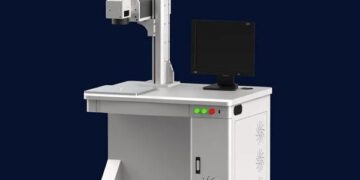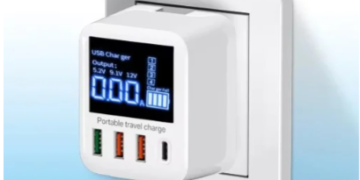Introduction
In the world of oil and gas exploration, mining, and heavy-duty construction, equipment failure is not an option. One of the most critical components used in drilling tools and downhole equipment is the 4145 alloy steel bar. Known for its exceptional toughness, hardenability, and strength, this alloy is the go-to material for demanding, high-impact environments.
However, not all 4145 alloy steel bars are created equal. Selecting the right one for your specific drilling application involves understanding its composition, mechanical properties, heat treatment condition, and supplier quality. This comprehensive guide will help you choose the right 4145 alloy steel bar for your drilling equipment needs.
What Is a 4145 Alloy Steel Bar?
The 4145 alloy steel bar is a chromium-molybdenum steel commonly used in applications requiring high strength, deep hardenability, and resistance to wear. It belongs to the AISI 41xx series of alloy steels and is specifically designed for high-stress applications like rotary drilling tools, drill collars, and downhole motor shafts.
Its typical chemical composition includes:
- Carbon: 0.43–0.48%
- Manganese: 0.75–1.00%
- Chromium: 0.80–1.10%
- Molybdenum: 0.15–0.25%
- Silicon: 0.15–0.30%
This unique blend gives the 4145 alloy steel bar outstanding hardenability and tensile strength, especially after proper heat treatment.
Why 4145 Alloy Steel Bar is Preferred for Drilling Equipment
The drilling industry subjects materials to intense pressure, torque, and corrosive environments. The 4145 alloy steel bar is chosen for these conditions because it offers:
- Excellent fatigue resistance under cyclic loads
- High tensile and yield strength
- Deep hardenability for consistent strength across cross-sections
- Good machinability and weldability when properly treated
- Resistance to impact and abrasion
These qualities make it a trusted choice in critical downhole and rotating equipment.
Key Factors to Consider When Selecting 4145 Alloy Steel Bar
- Heat Treatment Condition
One of the most important aspects of selecting the right 4145 alloy steel bar is its heat treatment condition. These bars are typically delivered in one of the following conditions:
- Quenched and Tempered (Q&T)
- Normalized and Tempered
- As Rolled or Annealed (less common for drilling applications)
For drilling tools, Q&T condition is typically preferred as it ensures the highest strength, ductility, and impact resistance. Always confirm the hardness range and tempering temperature to match your application requirements.
- Mechanical Properties
Depending on the application—be it drill collars, rotary tools, or stabilizers—you’ll need specific mechanical properties such as:
- Tensile Strength: 850–1100 MPa
- Yield Strength: 600–950 MPa
- Impact Toughness: High Charpy V-Notch values at sub-zero temperatures
- Hardness: Typically 285–341 HB (Brinell Hardness)
Make sure the 4145 alloy steel bar you’re sourcing meets or exceeds these benchmarks based on the end use.
- Non-Destructive Testing (NDT)
Because these bars are used in high-risk applications, it’s essential that they undergo rigorous testing. Reputable suppliers will conduct:
- Ultrasonic Testing (UT) to detect internal flaws
- Magnetic Particle Testing (MT) for surface defects
- Charpy Impact Tests for toughness
Request detailed test certificates with your order to ensure the integrity of the 4145 alloy steel bar.
- Size and Dimensional Tolerance
Precision matters in drilling assemblies. Depending on the design, 4145 alloy steel bars are needed in various diameters—typically ranging from 3 inches to 12 inches—and in lengths of up to 6 meters or more.
Check for:
- Tolerances as per ASTM A29 or API 7-1 standards
- Straightness and concentricity
- Machinability or pre-machined options
This ensures compatibility with downhole connections and tools.
- Supplier Reputation and Certification
Your choice of supplier can impact performance and safety. Look for manufacturers who are certified to:
- ISO 9001 (Quality Management)
- API Q1 / API 7-1 (for oil and gas sector)
- ISO 45001 (Health & Safety)
- ISO 14001 (Environmental Compliance)
Additionally, ensure they can provide full traceability, mill test certificates, and third-party inspection reports for the 4145 alloy steel bar.
Common Applications in Drilling Equipment
The 4145 alloy steel bar is commonly used in manufacturing:
- Drill collars
- Rotary subs
- Downhole motor shafts
- Drill pipe stabilizers
- Kelly bars
- Heavy-weight drill pipe (HWDP)
These applications demand high impact resistance and consistent performance in harsh environments. Selecting the right bar ensures reliability and lowers the risk of operational downtime.
Tips for Storage and Handling
Even after you select the right 4145 alloy steel bar, it’s important to handle it properly:
- Store in a dry, covered area to prevent surface corrosion
- Avoid exposure to moisture or salt spray
- Use protective coatings for long-term storage
- Follow safe lifting procedures due to the weight and length of the bars
Good handling practices extend the life and usability of the steel.
Conclusion
Choosing the right 4145 alloy steel bar is a critical decision for anyone involved in the drilling, mining, or energy sectors. From heat treatment and mechanical properties to testing and certifications, every factor plays a role in ensuring the bar can handle extreme pressures and environments.
Always work with reputable suppliers who provide complete documentation, consistent quality, and support in material selection. With the right 4145 alloy steel bar in your drilling equipment, you’ll gain not only performance and durability but also safety and cost-efficiency.























